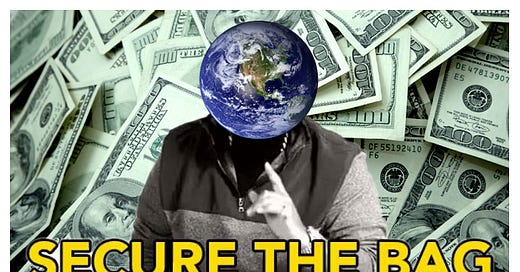Raise the Floor, Lower the Temp
How a Carbon Fee and Dividend Can Fight Climate Change and Poverty at the Same Time.
What is a Carbon Fee and Dividend?
A carbon fee and dividend is a policy where the government taxes carbon and other greenhouse gas emissions, levied by the ton and set to increase every year, then takes the money and returns it directly to the public in the form of equal cash payments. This policy goes by some alternate names, with “fee” sometimes replaced by “tax”, and “dividend” sometimes replaced by “rebate.” As we will see, the benefits of this policy are threefold: disincentivizing fossil fuels and thereby lowering greenhouse gas emissions, improving air quality, and increasing the financial security and spending power of the public. It also has a built-in corrective to the downsides of ordinary carbon tax models. The policy has already been implemented in Canada and Switzerland, and over 3,500 economists have signed a statement calling for the adoption of a carbon fee and dividend in the US, the largest such group of signatories in history.
The Environmental Case For a Carbon Fee and Dividend
Taxation is not merely a mechanism to generate revenue, it is also a tool to nudge behavior in particular directions by creating financial incentives and disincentives. If X costs more than Y, then all things being equal, fewer people will tend to consume X. If Y is then taxed, and its price raised, it becomes less appealing, and X becomes comparatively more attractive. Taxation has functioned in this way for generations, whether by design or unintentionally. If we want to facilitate the transition from dirty to renewable energy, raising the price of fossil fuels is a reliable way to move the needle. In the US, a $50 per ton carbon tax that increases five percent per year is estimated to reduce cumulative greenhouse emissions over a ten year period by about 18 gigatons, or 30 percent.
This would also result in healthier, less polluted air. In fact, the problem of air pollution is worse than we thought. Globally, over 10 million people a year die prematurely due to air pollution, including an estimated 483,000 in North America. Researchers at Duke University and NASA testified to the US House Committee on Oversight and Reform in 2020, saying “We find that there would be enormous benefits to the health of Americans from adopting policies consistent with the world’s 2°C pledge [Paris Climate Agreement]. Over the next 50 years, keeping to the 2°C pathway would prevent roughly 4.5 million premature deaths, about 3.5 million hospitalizations and emergency room visits, and approximately 300 million lost workdays in the US.”
The Economic Case For a Carbon Fee and Dividend
A carbon fee of this same size ($50/ton with five percent annual increase) would raise between 1.87 and 2.22 trillion dollars over a 10 year period, based on estimates from the Tax Foundation and US Treasury Department, respectively. Averaged out, this would translate to dividend checks of between $750-900 per year for every adult in the United States. Correspondingly, dirty energy costs would rise. The graphic below estimates what fossil fuel costs would look like in ten years’ time, relative to business as usual:

While the wealthy pay more in virtually all taxes in absolute terms, traditional carbon taxes, like all consumption taxes, hit low and middle income people more than high income as a percentage of their wealth, and are thus considered regressive. If fossil fuel energy prices rise 10-20%, large corporations and wealthy individuals, who consume the most energy, will pay the most in taxes, and yet they can most easily bear that extra cost, whereas many low and middle income people would be burdened by the additional expense. This is the biggest flaw in carbon taxation, and the beauty of a carbon fee and dividend. While the tax itself is regressive, when combined with a dividend, it becomes progressive. When the revenue collected from a carbon tax is directly returned to the public, the bottom 70 percent of society ends up net beneficiaries who receive more in dividend cash than they would pay in increased energy costs, while the top 30 percent would end up net payers, even though they too would receive dividend checks.
In an economy where nearly 80 percent of the workforce lives paycheck-to-paycheck, and 13 million people in poverty are completely disconnected from our ramshackle social safety net, putting cash into the hands of hundreds of millions of people can make a difference, as we’ve seen from the covid-19 stimulus checks. Increasing the public’s spending power also stimulates economic growth.
The case is clear. A carbon fee and dividend is a revenue-neutral bipartisan way to simultaneously combat climate change, economic insecurity, and improve public health. It’s a win-win-win.
See also: “Universal Basic Income: Everything You Need to Know”
Subscribe now and never miss a new post. Please also consider sharing this on your social networks. You can reach me at @AmericnDreaming on Twitter, or at AmericanDreaming08@Gmail.com.





